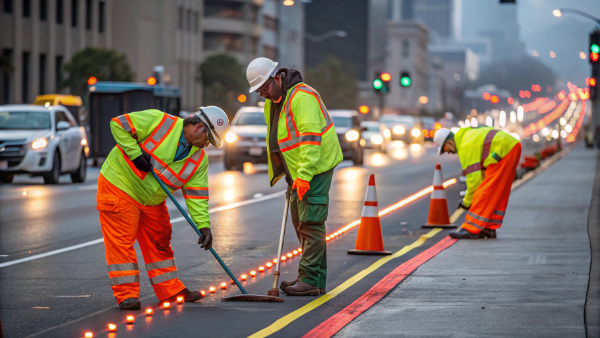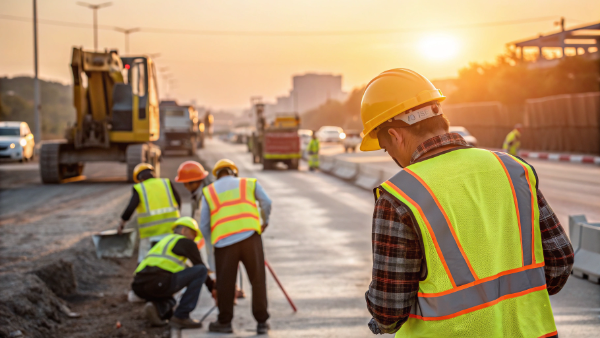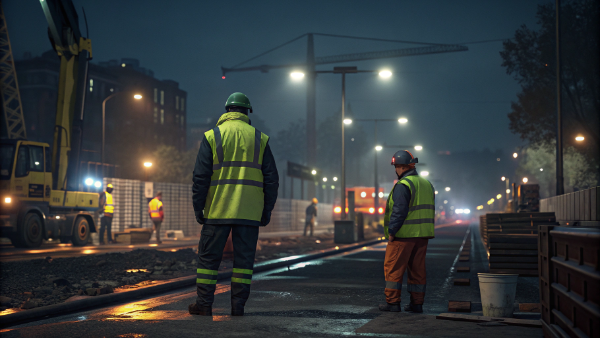Feeling lost in safety jargon? Choosing the wrong class puts your team at risk, creating compliance headaches and danger on the job site. Let's clarify what Class 2 means.
Safety Class 2 refers to a specific level of high-visibility apparel defined by the ANSI/ISEA 107 standard. It is designed for workers exposed to traffic moving over 25 mph or in complex backgrounds where they need to be much more visible than in Class 1 situations.
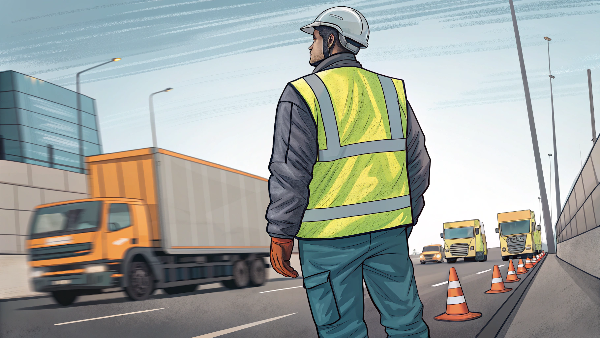
Now that we have a basic idea, it is important to understand the details. Many people confuse the different safety classes, and this can lead to big problems. Knowing the specifics helps you protect your team and keeps your business compliant. It also ensures you are buying the right gear for the right job. Let's dive deeper into some common questions to get a clearer picture.
What is the difference between ANSI 2 and ANSI 3?
Are you sure your team is using the right gear? Using Class 2 apparel when Class 3 is required is a dangerous mistake in high-risk zones.
The primary difference is the amount of required visibility. ANSI Class 31 mandates more background and reflective material than Class 2. It also requires material on the sleeves for jackets and shirts or on trousers, providing full-body coverage for high-risk environments like highway work.
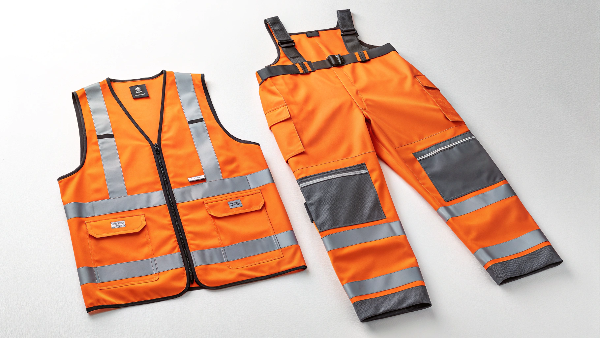
The jump from Class 2 to Class 3 is all about increasing a worker's visibility in the most dangerous conditions. Class 3 is for workers who face high-speed traffic (over 50 mph), intense weather, or low-light conditions where their full body shape needs to be seen from a distance. For my clients like Danny Cheng in the US, this distinction is critical. His customers in construction and logistics often work right next to fast-moving highways. In those cases, a Class 2 vest is not enough. They need a Class 3 jacket or coverall.
As a manufacturer, we build our garments to meet these exact specifications. The difference comes down to measurable amounts of material.
Class 2 vs. Class 3 Material Requirements (ANSI/ISEA 107)
| Feature | ANSI Class 22 | ANSI Class 3 |
|---|---|---|
| Background Material | 775 sq. inches (minimum) | 1240 sq. inches (minimum) |
| Reflective Material | 201 sq. inches (minimum) | 310 sq. inches (minimum) |
| Sleeve Requirement | No sleeves required | Requires reflective material on sleeves/trousers |
| Typical User | Roadway workers, utility crews | Highway crews, emergency responders |
We provide both Class 2 and Class 3 options so our partners can serve all their clients' needs effectively.
What is an example of a Class 2 appliance?
Have you heard "Class 2" used for something other than vests? The term exists in the electronics world too, and the two are completely different.
An example of a Class 2 appliance3 is an electric shaver, a laptop charger, or a power drill. In electronics, "Class 2" signifies that the device is double-insulated4, meaning it does not require a safety ground wire in its power cord for protection.
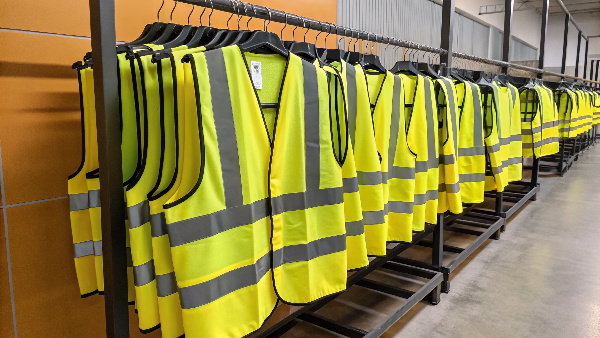
It is very important not to mix up these terms. The "Class 2" designation for appliances is an electrical safety standard, while "Class 2" for our clothing is a visibility standard (ANSI/ISEA 107). My expertise is in high-visibility apparel, but it is useful to understand the difference to avoid confusion.
Electrical Safety vs. Apparel Safety
| Standard Type | What "Class 2" Means | Primary Goal |
|---|---|---|
| Electrical (e.g., UL) | Double-insulated construction. | Protects the user from electric shock. |
| Apparel (ANSI/ISEA 107) | Mid-level visibility requirements. | Protects the user by making them visible to others. |
A Class 2 appliance has two layers of insulation protecting its live parts, which is why you often see them with two-prong plugs instead of three. While we at Vissafety focus on keeping workers visible and safe from physical hazards, knowing this distinction helps everyone in the safety industry communicate more clearly. Our job is to ensure that when a client asks for a Class 2 garment, they get a product that is fully compliant with the ANSI/ISEA 107 high-visibility standard.
What's the difference between class 1 and class 2?
Thinking any bright vest will do? Using a Class 15 vest in an environment that requires Class 2 is a serious safety risk and a compliance violation.
The key difference is the work environment's risk level. Class 1 is for low-risk areas where workers are well separated from traffic moving under 25 mph. Class 2 is required for environments with higher traffic speeds and more complex backgrounds, demanding much greater visibility.

Class 1 is the most basic level of protection. Think of workers who are not exposed to public road traffic, like those in a warehouse or retrieving shopping carts in a large parking lot. Their main visibility need is to be seen by co-workers operating forklifts or other vehicles in a controlled, low-speed environment. Class 2 raises the protection significantly. It is for workers who are on or near roadways where traffic is moving between 25 and 50 mph. This includes road construction crews, utility workers, and survey crews. The background they work against is also more complex, so they need to stand out more. The material requirements reflect this jump in risk.
Class 1 vs. Class 2 Material Requirements (ANSI/ISEA 107)
| Feature | ANSI Class 1 | ANSI Class 2 |
|---|---|---|
| Background Material | 217 sq. inches (minimum) | 775 sq. inches (minimum) |
| Reflective Material | 155 sq. inches (minimum) | 201 sq. inches (minimum) |
| Typical User | Warehouse workers, parking attendants | Roadway construction, utility workers |
For our wholesale clients, offering both classes is a business advantage. They can supply gear for an entire project, from the on-site support staff (Class 1) to the road crews (Class 2).
What is a class 2 safety shirt?
Do your workers complain that safety vests are bulky or hot? An uncomfortable worker is an unsafe worker, as they might remove their gear. A shirt is a great alternative.
A Class 2 safety shirt is a single garment, like a T-shirt or polo, made from fluorescent material that meets all ANSI/ISEA 107 Class 2 requirements for background fabric and reflective tape. It provides full compliance and comfort without needing a separate vest.

Safety shirts are one of our most popular products, especially for clients in warmer climates. They solve the comfort problem. Instead of layering a mesh vest over a regular shirt, the worker wears one single, breathable garment. At Vissafety, we focus on making these shirts highly functional. We use modern fabrics like moisture-wicking polyester and lightweight birds-eye mesh that keep the wearer cool and dry. This is a big deal for my client Danny, whose customers work through hot California summers.
We developed a line of cooling safety shirts with him that became a bestseller. Customization is also key. We can add logos, pockets, and other features.
Key Features of a Vissafety Class 2 Shirt
- Compliance: Guaranteed to meet ANSI 107 Class 2 minimums for materials.
- Comfort: Available in short and long sleeves with cooling, moisture-wicking fabrics.
- Customization: We can add screen-printed or embroidered logos without violating compliance.
- Durability: Our shirts are tested for colorfastness and strength to hold up on the job site.
A Class 2 shirt is the perfect blend of safety, comfort, and professional appearance.
What is a class 2 flammable?
Do all these "Class 2" labels have your head spinning? Confusing flammable liquid classifications with apparel standards is a recipe for serious danger on the job.
A Class 2 flammable6 is a type of liquid that has a flashpoint—the temperature at which it can ignite—between 73°F (22.8°C) and 100°F (37.8°C). This is a fire safety classification for chemicals and has nothing to do with high-visibility clothing.
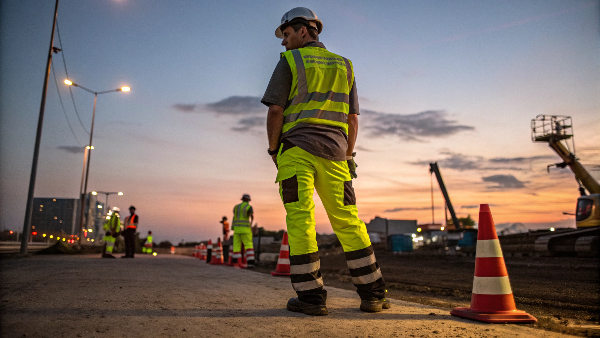
Again, this is a separate area of safety, but it is one that can overlap with our work. A "Class 2 Flammable" refers to a chemical's risk of catching fire, governed by standards from organizations like the NFPA7 (National Fire Protection Association). This is completely different from the ANSI/ISEA 107 standard for visibility.
However, a worker's job might require protection from both hazards. For example, an airport ground crew member works near fuel (a flammable liquid) and moving aircraft (a visibility hazard). In these cases, they need special apparel.
Fire Safety vs. Visibility Safety
| Standard | What it Governs | Example |
|---|---|---|
| NFPA / OSHA | Flammability of materials and chemicals. | Ethanol, certain industrial solvents. |
| ANSI/ISEA 107 | Visibility of safety apparel. | Safety vests, jackets, shirts. |
For these combined-risk environments, we manufacture Flame-Resistant (FR) high-visibility clothing. These garments are made with special FR-treated fabrics that self-extinguish when exposed to flames. They are also designed to meet ANSI Class 2 or Class 3 visibility requirements. It is a dual-purpose solution for workers in high-risk industries like oil and gas or electrical utilities.
What is class 2 compliant?
How can you be sure the gear you buy is truly compliant? A tag is not enough. Non-compliant gear gives a false sense of security and opens you up to fines.
A garment is "Class 2 compliant" when it is certified to meet the minimum area requirements for both background fluorescent material (775 sq. inches) and retroreflective material (201 sq. inches), as specified by the ANSI/ISEA 107 standard, including tape placement.
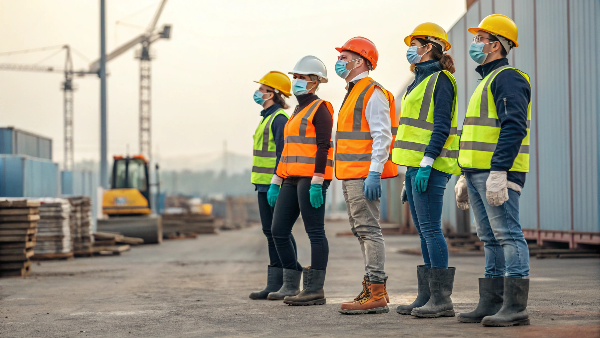
Compliance is not just a marketing term for us; it is the foundation of our entire production process. As a manufacturer selling to global brands and distributors, our reputation depends on it. A garment only becomes "Class 2 compliant" after passing a rigorous verification process. Here at Vissafety, we have a triple-inspection system.
First, we test the raw materials. Our in-house lab has over 75 testing devices to ensure the fluorescent fabric and reflective tape meet brightness and durability standards before they even enter the production line. Second, our design and production teams use precise patterns to guarantee the finished garment has the correct square footage of each material. Third, we conduct a final inspection on every batch before it ships. This deep commitment to quality is why partners like Danny Cheng have trusted us for over 12 years without a single major quality incident. He knows that when he buys from us, the product is not just styled like safety gear—it is certified, tested, and truly compliant.
What makes a class 2 safety vest?
Just by looking, can you tell if a vest is truly Class 2? Being bright yellow or orange is not enough. Specific design elements are required for real safety.
A Class 2 safety vest is made with at least 775 sq. inches of fluorescent background material and 201 sq. inches of reflective tape. Critically, this tape must be configured over the shoulders and in horizontal bands around the torso for 360-degree visibility.
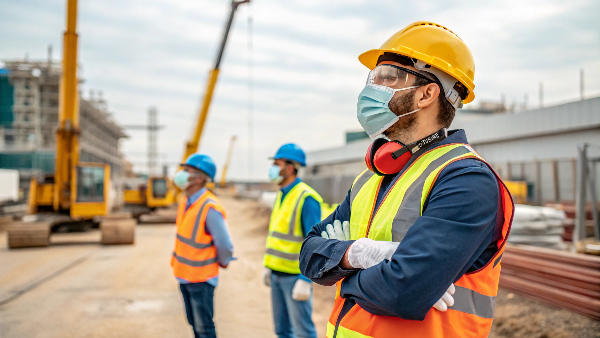
The design of a Class 2 vest is strategic and based on safety science. It is not just about slapping on some tape. The reflective stripes that go vertically over the shoulders are essential. They help a driver recognize a human shape, especially if the worker is bent over or partially obscured. The horizontal bands around the middle help define the worker's width and make them visible from all sides—front, back, and sides. This creates true 360-degree protection.
When we create new vest designs for our clients, our technical team always prioritizes these core requirements. We can add features like pockets, zippers, or radio clips, but we engineer them around the compliant zones.
Class 2 Vest Compliance Checklist
| Feature | Requirement | Why it Matters |
|---|---|---|
| Fluorescent Background | 775 sq. inches minimum | Makes worker visible in daylight and dawn/dusk. |
| Reflective Tape | 201 sq. inches minimum | Makes worker visible at night under headlights. |
| Tape Placement | Over shoulders and around torso | Defines human shape and provides 360° visibility. |
| Labeling | Must state it is ANSI/ISEA 107 Class 2 | Confirms it has been certified to the standard. |
A cheap vest might look bright, but without this specific construction, it does not offer Class 2 protection.
What is class 1 safety?
Do your workers always need the highest level of visibility? Over-specifying gear can be an unnecessary expense for workers in lower-risk jobs far from traffic.
Class 1 safety offers the most basic level of visibility under the ANSI/ISEA 107 standard. It is meant for workers in controlled, low-risk environments where they are well-separated from any traffic that is moving slower than 25 mph.
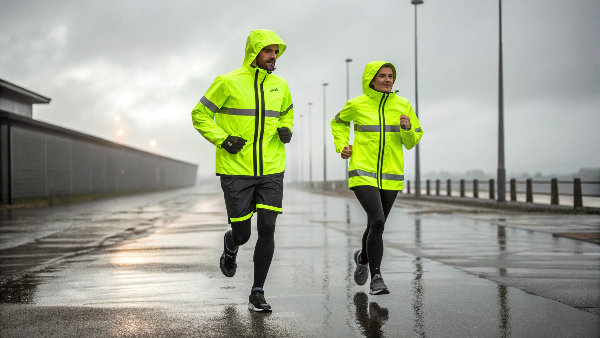
Class 1 is the starting point on the high-visibility scale. It is for workers who need to be seen by their coworkers, not the public. The risk of being struck by a vehicle is low. Good examples include warehouse workers operating forklifts, maintenance staff in a cordoned-off parking garage, or delivery drivers who are just dropping off packages and not working near active traffic. The goal is simply to make them stand out from the surrounding environment in a non-complex, controlled setting.
Because the risk is lower, the material requirements are also lower than for Class 2. This often makes Class 1 garments less expensive.
Class 1 Key Requirements
- Background Material: Minimum of 217 sq. inches.
- Reflective Material: Minimum of 155 sq. inches.
- Garment Type: Can be a simple vest or sash.
- User Environment: Low-speed (under 25 mph), significant separation from traffic.
As a full-service manufacturer, we produce a huge volume of Class 1 vests. This allows our wholesale partners to offer a complete safety solution to their customers, providing the right level of protection for every single employee on a job site.
Conclusion
Understanding safety classes, especially Class 2, is vital for protecting your workers. We ares here to provide fully compliant, high-quality, and customizable high-visibility apparel for all your business needs.
-
Explore this link to understand the specific requirements and benefits of ANSI Class 3 apparel for safety in high-risk environments. ↩
-
This resource will clarify the distinctions between ANSI Class 2 and Class 3, ensuring you choose the right safety gear for your needs. ↩
-
Understanding Class 2 appliances is crucial for safety and compliance in electronics. Explore this link for detailed insights. ↩
-
Learn about double-insulated appliances to ensure safety and compliance in your electrical devices. This resource provides essential information. ↩
-
Explore this link to understand the basics of Class 1 safety vests and their appropriate usage in low-risk environments. ↩
-
Understanding the safety regulations for Class 2 flammable liquids is crucial for workplace safety and compliance. ↩
-
Exploring NFPA's guidelines can enhance your knowledge of fire safety standards and help ensure a safer work environment. ↩

